I'm assuming that this would be a good thing, of course... Whaddya think?
1 Comment
I have been digging into different educational technology tools in preparation for a webinar I'll be giving shortly, which is really fun. I am super excited about one in particular - Cinch.fm. It's basically a super-easy, low-barrier to entry, share-friendly podcasting service that allows you to record your messages from your computer, iPhone (Android on the way, perhaps?), or a standard phone via an 800 number. You can attach a photo to your message, share it over social networks or via a unique URL, or embed it with custom HTML, as I have here: It was so ridiculously easy to create this. The implications, I think, are awesome. Here's one idea I thought would be cool: imagine this in a classroom. Kids are working on an art project and the teacher comes over, takes a picture of their piece, and does a short phone interview with them about their work. Record that and send it home. Or attach the link to the interview to a QR code displayed at the school art fair for a guided tour.
I love it, and I'm excited to play with it. And you should come to our show. :) (Buy tickets here!) A bit of Torah for you, dear readers... This week's parsha is Miketz, in which, among other things, Joseph (of Technicolor Dreamcoat fame) interprets Pharaoh's dreams, rises to power, saves the nation, and is confronted by his family. The Haftarah is also amazing - about the wise Solomon and the baby dispute. But that Haftarah is almost never read because Miketz coincides with Chanukah. So we read a special Haftarah which has to do with lights and menorahs and the Temple and all kinds of fun stuff. I would like to take a moment and talk about Joseph, dreams, and networks. Joseph has had his share of ups and downs. He's favored by his father, but scoffed by his brothers; he gets superior treatment, but winds up in an Egyptian jail. But Joseph is a unique, persistent character and doesn't let his confining walls hold in his talent. He begins interpreting dreams for his fellow prisoners and word eventually reaches the Pharaoh that he's got someone very special locked up in his dungeons. And the rest is history... Joseph is called to Pharaoh, interprets his dreams, gets appointed viceroy, and saves the land from famine. 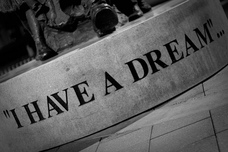 So what does this parsha imply for Jewish professionals working as network weavers in the 21st Century?
Well, lots of things... Here are a couple of lessons I've drawn from this text (and I would love to hear yours): Pharaoh found Joseph in jail. So? Your next big idea could come from anywhere, and anyone. When we talk about social capital (the trust, the things we do that hold us together in relationships, communities, and networks) we can either bridge or bond (or both). In a nutshell, bonding brings together folks with things in common, like a synagogue sisterhood. Bridging brings together more varied perspectives or types of people, like at an interfaith event. Really we're always doing both; bridging and bonding are like a continuum (and it's all a matter of perspective, anyhow - how different are we, really?). When Pharoah found Joseph, that was radical bridging. Where are we building these kinds of bridges? Do we recognize the potential when we see them? Not only that, both Pharaoh and Joseph listened. Either side could have been completely disregarded for any number of reasons. Joseph could have used his influence to undercut Pharoah. Pharoah could have dismissed Joseph's talents as irrelevant or silly. But somehow they found a way to trust one another. When we bring new voices to the table, are we listening? Are we kicking off our relationships on a foundation of trust AND mutual benefit? They connected, they listened, they acted. The famine was seven years down the road! But they had a vision, developed their system, and implemented it, step by step, to save the country. Do our partnerships end with words, or do we take action? Finally, there's something juicy in here about the power of dreams and networks. Network-weavers, cheesy as it may sound, are dream-weavers (cue the 80's soundtrack). Our job is to listen, interpret, connect, and empower our networks to action. We are part-Pharaoh in recognizing the Josephs, part Joseph in listening and interpreting, but mostly we are the shomrim (watchers? keepers? guardians? there's not really an English translation I'm happy with) of the web that allows those players to connect. Those with dreams, those with the power to interpret, those with the drive to action. Here's a quote from the brilliant NetworkWeaving blog: Network weavers do three things. 1. They constantly learn about the assets and opportunities in the network. This includes the tangible and intangible, shared and isolated, well-engaged and unengaged talents, resources, funds, space, expertise, and knowledge available within the network. 2. They constantly learn about the dreams of people in the network. These are the passions inspiring what people are striving to create and pursue. 3. They constantly introduce and connect people with complementary dreams and assets. We are dream-weavers. One last thought - the "ketz" bit of Miketz usually means "end." The opposite of a beginning. But of course the Torah is without beginning and without end... Another word for ketz is "edge" - a possible ending, something a little scary, but also the potential for beginning something entirely new. I like that. What other lessons can we draw from this parsha? Do you see network weavers as dream-weavers? How has this connection played out for you in your work? The following is an email from my colleague at The Jewish Education Project about Thanksgiving. It touches on some specifics to her position in the Early Childhood and Family Engagement department, but I loved the sentiment and the ideas she articulated so well, so I thought I would pass it on...
Hello Colleagues, I would like to take a minute a wish you all a very meaningful and relaxing holiday & long weekend; and to share a new perspective about Thanksgiving that I have come to see through G2E. Personally, I have never been that keen into what I was taught Thanksgiving is about- even as a child I don’t think I bought that everything happened so peacefully and magically between the Pilgrims and Native Americans. As I got older, I became more and more frustrated with the way our country portrays the events and how I feel we “sell” that story to our children. Now, I understand that it is a tough decision as we want our children to understand the meaning behind the holiday, and without a context that is a hard message to share. Especially now that I have my own three year old, I am struggling between my moral integrity to share the real story of how we overtook this land versus the more age appropriate “version” we are told from an early age. Since my son was born I have been apprehensive about how I was going to explain Thanksgiving. This year, through G2E, I believe I have found the answer. As I participated in the Westchester Professional Learning two weeks ago at Westchester Jewish Center, and engaged in the session led by Storahtelling, I realized that that there are many age-appropriate and developmentally appropriate ways to not only share out the meaning behind Thanksgiving, but to also connect it to our Jewish history, tradition, and values. I realized that there are many truths and messages behind Thanksgiving that so clearly line up with our tradition of harvesting the land during Sukkot, and giving thanks for things we have in our lives through the daily prayer (often said in our Early Childhood Centers)- Modeh Ani . It occurred to me that although we set aside one day of Thanks in America, in Judaism this is a very consistent theme in our daily prayers and activities. I thought why not introduce the concept of giving thanks through the lens of what it means to be a good, decent person and how to do that in a Jewish way, as well. So, I took out the prayer Modeh Ani and I showed it to my son. I sang it and explained it in 3 year old terms, and connected it for him to Thanksgiving. We have been talking about what being thankful means for a little over a week now, and it wasn’t until I could integrate the Modeh Ani into my “mini-lesson plan” that I truly felt like I was passing on a substantive, meaningful message to my son about I hope he can live his daily life. I plan to continue to reinforce this message throughout the year, because what I really want for my son is that he know that being thankful doesn’t happen once a year, but that to be a good, decent person in this world, we must be aware of being thankful all the time. This isn’t to say that I want my son to be so consumed with this that he can’t understand what feeling thankful is, but rather to begin teaching him that having an aware mindset is an important part of being Jewish and being an American. I’d like to share the text that Storahtelling presented to us about the Declaration of Thanksgiving as a holiday by George Washington in 1789. While reading this text, I saw many similarities between this and Jewish prayers and texts, and all of a sudden felt much more connected to Thanksgiving than I have in decades. I plan on sharing this text at my Thanksgiving meal tomorrow and I am curious and excited to see what kind of conversation this sparks. Personally, I finally feel a little more comfortable with celebrating Thanksgiving, but more importantly, I finally feel armed with enough information to be able to educate my son on the “the true meaning” behind Thanksgiving and to be able to connect that to our Jewish roots, values, and identity. As a relatively new mom with a strong connection to justice and Judaism, this is something I’ve been searching for for a long time. Because after all, I am a Jew, but I am also an American. I hope you each find your connection to this holiday, and that it is peaceful, relaxing, and festive. With many thanks, Marni a message from Stereo Sinai
Heya Thumpers! It's (almost) here!! The highly-anticipated debut album(s) from Stereo Sinai! And Thumpers, we are so excited because:
Click Here to Pre-Order Now We're so excited about these tunes; we know you (and everyone on your holiday gift list) will love them. (And Thumpers in New York and Chicago - keep your eyes open for tour dates, more info shortly...) Also - and we can't believe it either - this week is the anniversary of the release of G-dcast - Lech Lecha! G-dcast continues to be a remarkable project, and we are so proud to have been a part of it. So in honor of forging new paths, and remembering journeys past, here is our G-dcast piece once more: Check Out G-dcast - Lech Lecha Special thanks and congratulations to Hannah - 2nd grader, artist, Thumper extraordinaire - winner of the Stereo Sinai Coloring Contest! She will receive a free copy of "Biblegum Pop"; way to go, Hannah! (Fan us on Facebook to view our favorite coloring contest entries, and keep up with other contests, give-aways and fan specials.) That's it for now, but there is much more to come...stay tuned! Peace, Miriam and Alan Stereo Sinai p.s. Got questions? Looking to book Stereo Sinai in your community? Just want to shmooze? Talk to us! Email, Twitter, Facebook, or phone (262-6SINAI6). Originally posted in Darim Online's blog, JewPoint0 Beth Kanter and Allison Fine accurately quip in “The Networked Nonprofit” that “social media is a contact sport.” You can’t expect to succeed without getting your hands dirty. As it happens, that’s just how the young nation of Israel agrees to learn the Torah - standing at Sinai, overwhelmed by the presence of the Divine, they collectively intone “na’aseh v’nishma” (Exodus 24:7 - what an appropriately enumerated verse). Loosely translated, “we will do, and (then) we will hear/understand.” Or, even more loosely translated, “first we will give this a try, then we’ll have some idea what it’s all about.” Israel agrees that the Torah is not an intellectual exercise, it is a lived experience. “Na’aseh v’nishma” is your social media call to action. Knowing conceptually that it would be useful to connect with other people free of the constraints of time and space is an important step. But it can’t compare to, for instance, engaging your network on Facebook to help find the modern equivalent of “na’aseh v’nishma.”* Sensing that social media increases the likelihood of serendipity doesn’t hold a candle to finding your next job through Twitter. Believing that social media is a key part of your communications strategy is very different from putting that belief into action. But what about those who need to feel the ROI (or rather, ROE - return on engagement) before diving in? What about the “lo n’aaseh” (“we will not do”) folks? On the one hand, there are those who will take on this challenge only because they “have to.” A friend recently told me about a colleague in her office who, upon taking the job, was cajoled into creating a Facebook account for the first time. The position involved working heavily with teens, and the person he was replacing realized as he was ending his tenure that he had missed out on opportunities for engagement by avoiding social media - “Facebook” was the advice he passed on to his successor. The new colleague is seeing early signs of success, meeting the teens in their own space, in their own language. Another friend had a similar experience: On the other hand, there are those for whom working in social media may never feel like the right fit. It may move too frenetically, require too many technical proficiencies, feel too exposing or time consuming, or any number of things. At the same time, social media is becoming part of the vernacular of our culture. Even the most reluctant of us may have to reexamine our practice in light of new ways of working. This is a familiar story to some: Ultimately, you can’t really “get” social media without saying “na’aseh v’nishma” and engaging it as a contact sport. Facing reluctance is tough - there are always reasons not to do anything! So if you’re working on a co-worker, easing them into working with and through social technologies, it would be useful to have the following things in mind:
Admittedly, this is no easy task. Success in social media does take an investment of time, energy, thought...much like any meaningful human relationship. But this is how we learn. We do, and we do again. And then we understand. What was your “na’aseh v’nishma” moment? When did the “doing” make all the difference? (Share your voice in the comments and one lucky commenter, chosen at random, will receive a free copy of the book “Switch”.) *The modern equivalent of “na’aseh v’nishma” could arguably be found in cognitive psychology: “effort justification.” It’s a fancy way of saying that when we work at something, when we dig in and invest ourselves, we understand it better and appreciate it more. Hat tip to Jay Schreiber and Rabbi Josh Yuter for helping me out on that one. Shana tova, and thanks for being such a devoted Thumper! As an expression of our appreciation for your continued Stereo Sinai fandom, please accept a token of our affection in the form of a free mp3 of our new song "If You Go, I'll Go":
Get the Song We think the message of the song is fitting as we move into the new year of 5772. We've got some big, fun things planned ahead (new album on the way - stay tuned!), and we're so thankful and excited that you're joining us on this journey. Wishing you wonderful year full of music and light, Miriam and Alan Stereo Sinai By the way, got questions? Looking to bring Stereo Sinai to your town? Just want to shmooze? Talk to us! Shoot an email, find us on Facebook or Twitter, or give us a call at 262-6SINAI6 - we'd love to be in touch! Last weekend Alan and I shlepped ourselves and everything we own (well, it kinda seemed like it) to Goshen, NY, the site of the up-and-coming Yiddish Farm. Stereo Sinai had been invited to play on Sunday afternoon of their Golus Festival (there's a nice write-up about the festival with some pics here), and we decided to give it a shot for the whole weekend. "Golus" (or galut in Hebrew) means exile or, in some cases, Diaspora. It's the term used for the state of being into which the Jews were thrown after the destruction of the Second Temple in Jerusalem in 70 CE. It's usually kind of a nasty word, implying lowliness and loss. Forward-thinking Israelis don't typically use the word "galut" to describe Diaspora Jewry, favoring instead the word "t'futzot," or those of us who are spread out all over the place. (That's the technical definition, I swear.) 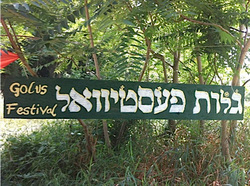 And yes, we were in golus. Especially to a city-minded, non-camper such as myself. I was in golus from many, many things. Internet, for instance. Mattresses. Air conditioning. English.
But we were also in golus in other ways. From denominations, for instance. The battles among Reform, Conservative, Orthodox, and other streams of Judaism are ongoing, bitter, and destructive (a friend wrote an interesting post about the end of this era that I recommend checking out). Here there was no such thing. Everyone from the most secular, strictly cultural Jew to a small crew of Satmar Hasidim gathered in our mutual love of all things Yiddish. Men and women, young and old...it was surprising and beautiful. We were in golus from a sense of hierarchy as well. I have to admit, I was skeptical as to how the festival would run. But everyone pitched in and made it happen. Leadership rotated, fluctuated, and rarely settled in one person. There were some really incredible moments throughout the weekend. Dancing with the Torah from one end of a field to the other. Marveling at the great masses of hay that descended from the sky, refuse from the farm next door which we all interpreted as manna from heaven. The moment we found out we were going to be in golus even from Golus because our camp site wasn't up to code for the number of people there (on Sunday morning we moved to another site for the music). Dancing with new friends. All these things and more. Don't get me wrong, I will not miss the mosquitoes and eating mostly the same thing every day and the oppressive day-heat and the bewildering night-cold. But I have walked away with a renewed appreciation for, and a new vision of, exile.  Last night no less than four - count them, four - utility (manhole) covers blew up on my new street in Crown Heights. It caused quite the stir. The entire neighborhood came out and wandered around, chatting and laughing, basking in the glow of our respective mobile devices. It turned into a big party. Alan and I finished off all the ice cream in the freezer, just in case. While Alan and I were hunkered down outside the park that divides our street, I was busily checking Twitter and came across this tweet: "For financial reasons." It was at least as big a shock as my street exploding. But then again, manhole covers blow up all the time. And Jewish organizations are prone to closing when there's no money anywhere in sight for creative, forward-thinking projects that don't have anything (directly) to do with advocating for Israel or ending the "plague" of intermarriage.
But manholes covers don't need to explode. It's a problem of maintenance. If we are more attentive to our streets and the magical grids below them that make our freezers keep ice cream cold and delicious, they won't cause the sparks that ignite the gases that make the manhole covers shoot into the sky. We need to invest in regular maintenance, not just emergency measures. The same is true of the Jewish world. JDub, and other innovative projects, needed maintenance (there's a great article on eJewish Philanthropy that illustrates this much better than I ever could - minus the flimsy manhole comparison). Jewish arts and culture are the magical wiring beneath the surface. They keep us whole, inspired. They simultaneously reflect and create our society, and they deserve our investment. I'm sure I will write on this again. In the wake of this boom, it will be interesting to see who from the neighborhood steps up, and how the landscape - the road - changes. I just donated my ponytail to Locks of Love. Here's the story in pictures: (The new cut actually looked a little Justin Bieber-ish at first, but then the stylist and I talked about pixie bangs and all was well with the world.) I don't know how I found out about Locks of Love, or really why I've donated to it three times now. Mostly, to be honest, it's an excuse to get a funky haircut every once in a while. But at work today - amidst the squeals of "Oh my god! You cut your hair!" - a coworker brought it home for me... "A friend of mine had cancer, and went through the whole thing...treatments, hair loss... Those donations really get used." And when I uploaded the "after" picture to Facebook, I got these comments: My friends (and wonderful, exclamation-point-happy mother-in-law) really tapped into it: I'm wearing new hair, and someone else will be, too. We should both wear it in good health.
In Israel, when someone gets new clothes, or a new car, or a haircut, you say "titchadesh" for a man or "titchadshi" for a woman. It means "may this new thing bring you renewal." I really like that. And I think it's especially appropriate for something like Locks of Love. So go in love, locks! Time for something new. |
Photo used under Creative Commons from Davichi

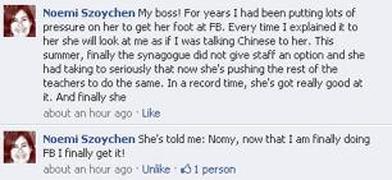
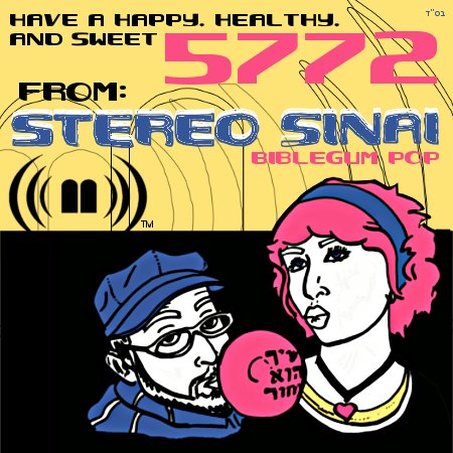
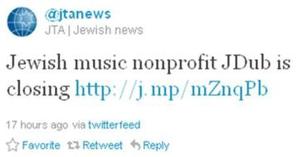
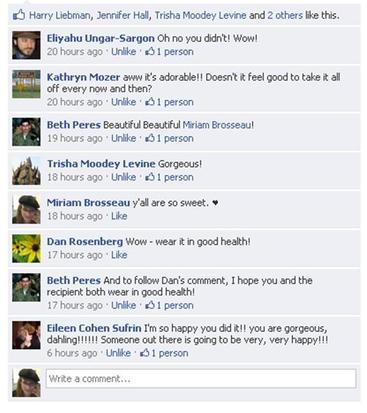



 RSS Feed
RSS Feed